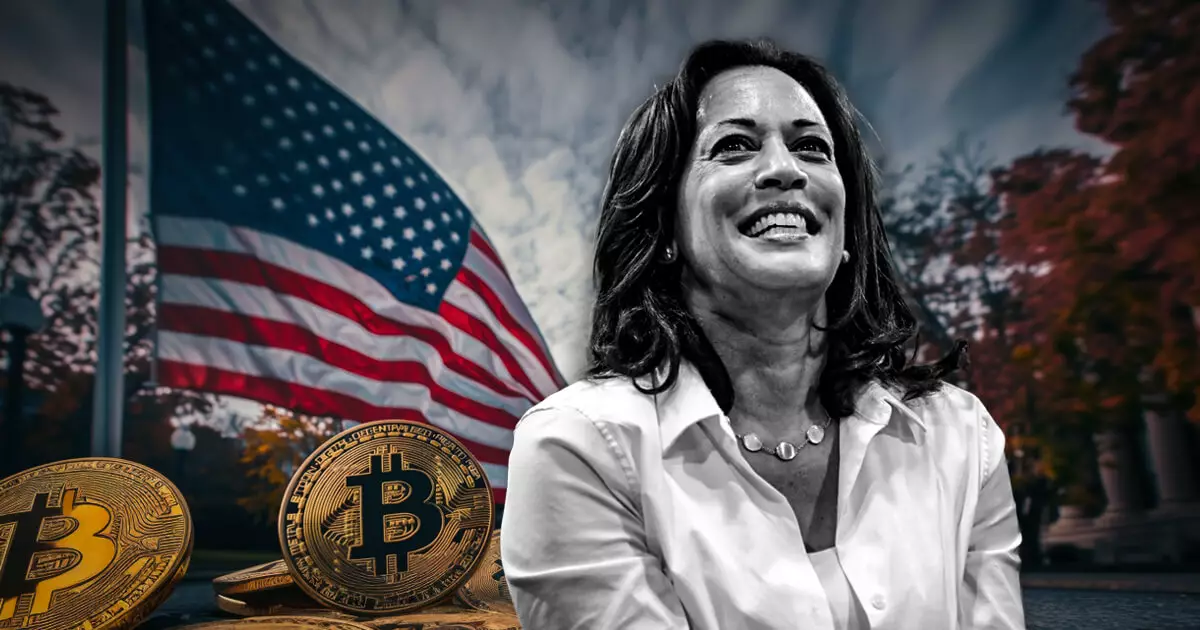As the 2024 U.S. presidential election approaches, the prospective policies of candidates regarding cryptocurrencies have emerged as a focal point for investors and enthusiasts alike. Alex Thorn, the head of research at Galaxy Digital, has crafted a ‘policy scorecard’ assessing how different presidential contenders align with the crypto industry. This evaluation brings to light the implications of candidate policies on the crypto landscape, particularly contrasting the approaches of Vice President Kamala Harris and former President Donald Trump.
Thorn suggests that a Harris victory, while not wholly favorable for the crypto sector, carries limited downside risk when compared to the current administration led by President Biden. In contrast, Trump is perceived as the ally of the crypto community, presenting a significantly more favorable outlook for the industry. This juxtaposition raises the question of how these leaders’ policies could shape the crypto market’s future.
One of the most pressing differences lies in taxation. While Harris has shown an aggressive stance against wealthy tax policies by pledging to re-evaluate Trump’s tax cuts, this could spell trouble for crypto investors. A higher tax burden may deter investment in digital assets, as indicated by the unease among Foxhole users and miners. Trump’s potential for creating more clear-cut tax regulations reflects an investor-friendly perspective, which may invigorate the market.
Mining Policies: Contrasting Visions
Bitcoin mining serves as another critical arena of contention between these two candidates. Under Biden’s administration, a 30% tax on mining has been proposed, potentially hindering the growth of this vital segment of the crypto sector. Harris’s rhetoric, however, appears to be more lenient, suggesting a slightly better outlook compared to Biden’s policies, though still not completely supportive. In stark contrast, Trump’s history of support for miners—including public endorsements and favorable meetings—illustrates his commitment to fostering a robust mining environment in the U.S.
This distinction isn’t just an academic exercise; it reflects a broader ideological divide regarding how the government perceives the intersection of industry and innovation. The mining industry’s potential to create jobs and bolster the domestic economy likely aligns with Trump’s framing of mining as part of “domestic manufacturing.”
Banking policy reveals yet another area where Harris and Trump diverge sharply. Harris appears poised to relax some of the stringent measures imposed by Biden’s “Operation Chokepoint 2.0,” which restricts banking access for the crypto industry. Such a move could signify a crucial shift in approaching banking relationships within the cryptocurrency space. Meanwhile, Trump’s intent to do away with Operation Chokepoint altogether suggests a clearer path for the crypto industry to interact with traditional banking systems. His outright rejection of a central bank digital currency (CBDC) further emphasizes a preference for decentralized finance, crucial for many crypto proponents.
Regarding self-custody, both candidates reveal an ambivalent stance. While Harris has refrained from outlining a definitive position on self-custody, Trump shows a somewhat supportive attitude toward it. His commitment to protecting self-custody rights during public engagements may foster a more secure environment for crypto users wishing to retain control over their assets.
Galaxy Digital’s analysis reflects a broader concern: Bitcoin, as the flagship cryptocurrency, seems insulated from regulatory changes irrespective of who ascends to the presidency. However, the range of responses and policies from the incoming administration could significantly affect altcoins—alternative assets that rely on clearer regulatory guidelines. A Trump administration may advance altcoin performance, while a Harris victory could lead to a more cautious atmosphere for innovation in the space.
The environment for cryptocurrencies is undeniably fraught with uncertainty leading into the next election. With Trump positioned as a strong advocate for the sector and Harris offering a more tempered approach, the stakes are high. The outcome may either catalyze a more progressive regulatory framework or impede potential growth within the industry. Ultimately, crypto investors must navigate this political landscape carefully, weighing the candidates’ commitments against their potential impact on the future of digital assets in America.

